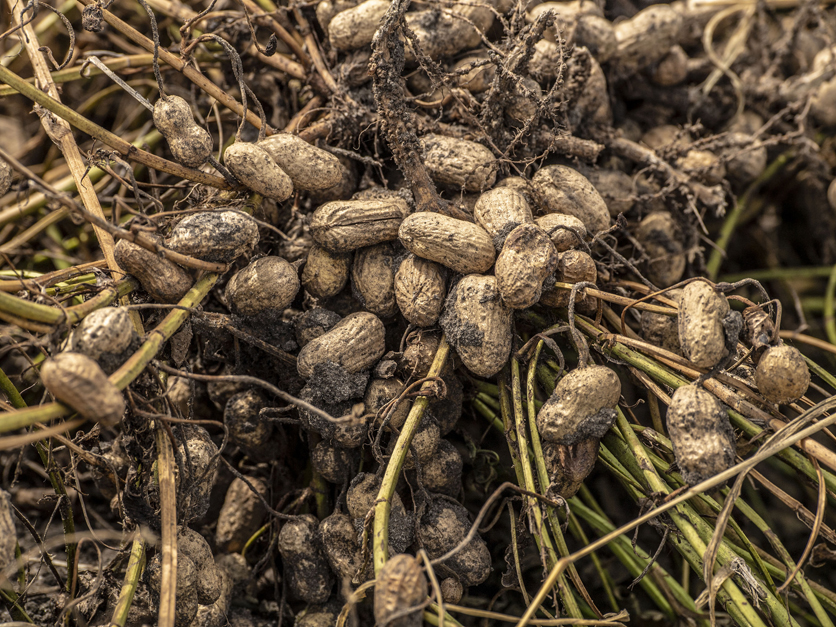The U.S. sold about $20 million worth of peanuts to Japanese importers last year, but the American Peanut Council expects that American farmers will be able to sell a lot more in the coming years now that they have a tariff advantage over the Chinese.
The key to that expected success is the U.S.-Japan Trade Agreement (USJTA). Japan agreed to completely remove its 10% tariff on peanut imports from the U.S., which is the second-largest supplier of the Japanese market behind China.
The Japanese tariffs on walnuts and almonds also dropped to zero, but there isn’t much competition from anywhere for U.S. sales of those nuts to Japan.
“China is the big kid on the block in terms of (peanut) exports to Japan and we have an opportunity to take some of that market share now that we have a tariff advantage,” Richard Owen, president and CEO of the American Peanut Council, tells Agri-Pulse. “China currently supplies about 70% of Japan’s peanut imports. The goal of the U.S. peanut industry is to try to get some of that market share.”
And the U.S.-Japan trade agreement will go a long way in helping make that happen, said Owen.
While Japan dropped the 10% tariff on U.S. peanuts on Jan. 1, 2020, Japanese importers continue to pay a 10% tariff on Chinese peanuts. That’s because China failed to negotiate a similar provision in the Regional Comprehensive Economic Partnership, or RCEP, according to an official with USDA’s Foreign Agricultural Service.
RCEP is the massive trade pact between China, Japan, Australia, South Korea, New Zealand, Vietnam, Singapore, Thailand, Laos, Indonesia, the Philippines, Cambodia, Burma, Brunei and Malaysia. It’s essentially China’s effort to counter the Trans-Pacific Partnership, a pact of Pacific Rim countries.
The U.S. and Japan led the formation of the TPP until the U.S. pulled out in January 2017, and then negotiated a bilateral trade pact with Japan.
And that trade pact is giving the U.S. an edge in what was a declining market. U.S. peanut exports to Japan were valued at about $20.3 million in 2020, down 31% from about $26.6 million in 2018, according to the available data from USDA.
Interested in more news on farm programs, trade and rural issues? Sign up for a four-week free trial to Agri-Pulse. You’ll receive our content - absolutely free - during the trial period.
While Japan’s population appears to be declining, the country is also eating more peanuts and peanut-containing products like peanut butter, says Owen. And some of that is due to years of marketing and investment by the American Peanut Council.
The group, says Owen, “has invested in consumer campaigns to try to offset some perceptions that peanuts may be high in calories and fat, trying to reverse that perception so the Japanese will feel good about consuming nutritious peanuts and peanut butter.”
All of that work communicating scientific research about the healthful benefits of peanuts has paid off, says Owen, and now the tariff reduction will also make U.S. products cheaper than products from competitors like China, Argentina, Brazil and South Africa.
Eating healthy is of paramount importance to the Japanese, according to a recent analysis by FAS.
“According to the Ministry of Agriculture, Forestry and Fisheries (MAFF), over 70% of Japanese people prefer to live a healthy lifestyle,” the FAS report notes. “Consumption is increasing for products that augment nutrients such as vitamins and minerals.”
That’s why the Japanese are also such big consumers of almonds, walnuts and other tree nuts. Farm group officials say the tariff reduction should spur trade because now the nuts are more affordable, but it’s still too early to detect impacts.
“We’re certainly pleased with the reduction," said Julie Adams, a vice president for the Almond Board of California. “Any reduction will certainly benefit shipments.”
The U.S. exported about $258 million worth of almonds and $133 million worth of walnuts to Japan in 2020.
Pamela Graviet, senior marketing director for the California Walnut Commission, says California holds a 97% market share for Japan’s imports of the nuts.
The U.S. is Japan’s largest foreign supplier of tree nuts, and Japan lowered its tariffs on those commodities as well, making them more affordable.
“In 2020, the United States exported $411 million of nuts to Japan, making Japan the (seventh-largest) overseas market for U.S. nuts,” according to FAS. “Almonds and walnuts are Japan’s top nut imports from the United States, accounting for over half of Japan’s total nut and nut product imports in 2019.”
For more news, go to www.Agri-Pulse.com.


